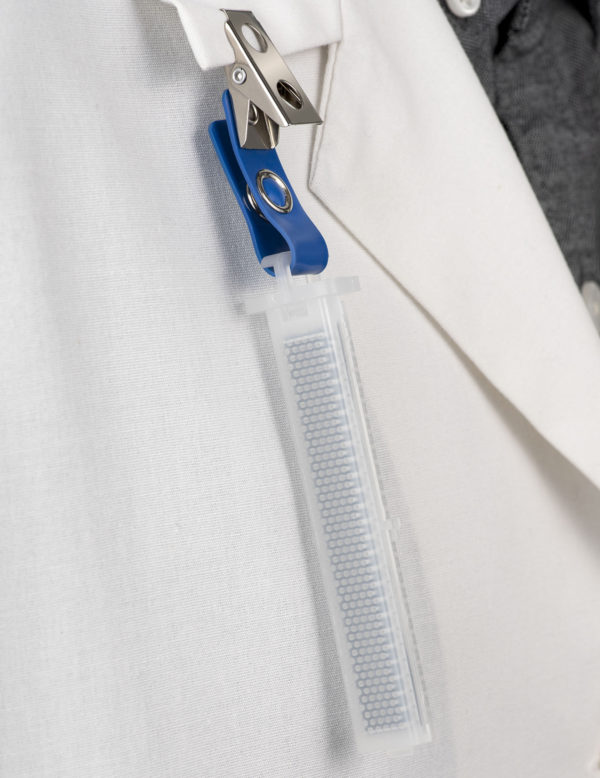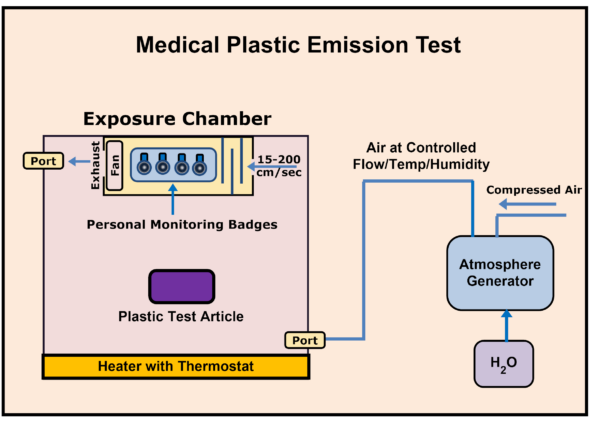by Dr. Charles Manning, PhD, CIH
In a recent “Letter to Health Care Providers”, the US Food and Drug Administration (FDA) requested medical device suppliers study the potential emission of toxic chemicals such as formaldehyde and cyclohexanone or other chemicals from neonatal incubators or other devices in close contact with neonatal infants. I would like to describe a new tool that is available for measuring trace level emissions of formaldehyde, cyclohexanone, and other volatile organic compounds (VOCs) from medical devices at parts per billion levels.

Emissions of VOCs in the parts per million (ppm) or parts per billion (ppb) range may have harmful effects, especially in the breathing zone of neonatal infants or compromised hospital patients. Personal monitoring badges developed for workplace exposure assessments have been shown to be applicable to such studies. By placing a monitor inside (or adjacent to) a medical device under controlled conditions, it is possible to measure the daily emission of a variety of VOCs from a test device enclosed in a test chamber.
Several analytical lab methods such as gas chromatography (GC), and high performance liquid chromatography (HPLC) are capable of measuring a variety of VOCs in an air sample. The problem with direct use of these methods is that a large volume of air (several liters) must be injected into a GC or HPLC to detect levels at or near to 1 part per billion. Since these instruments are generally not portable, it is necessary to collect a large air sample and deliver it to the lab before the contaminants to be analyzed decompose or escape from the sample.

These problems may be solved by using a personal monitoring badge designed to continuously sample a significant volume of air (ca. 100 Liter in one day, or ca. 4 L/hr) to collect and retain designated VOCs during sampling and transit to the lab, then to yield them by extraction for analysis by GC or HPLC. Examples include the 581AT for formaldehyde and the 525AT for cyclohexanone.
Since personal monitor sampling rates are specified in L/min, the amount of air sampled increases with time, while the detectable level (in ppm or ppb) decreases with time. Method detection limits that are available can be observed in the following table.
